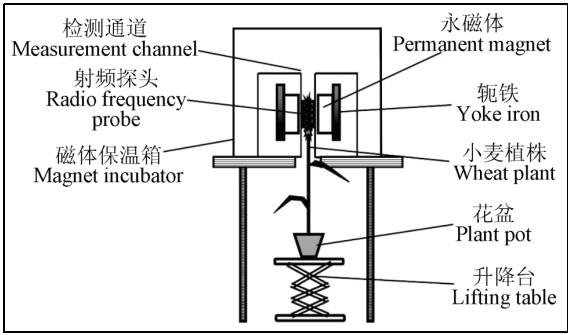Low Field NMR Analysis Grain Filling Period of Winter Wheat
Winter wheat is planted in slightly warmer places, generally sown from mid to late September to early October and matures from the end of May to mid-to-late June of the following year. For example, North China and its south are winter wheat. In my country, the Great Wall is generally the boundary, the north is generally spring wheat, and the south is winter wheat. Our country is dominated by winter wheat.
Winter Wheat Grain Filling Period
The grain-filling stage of wheat is a stage of wheat grain formation. During the grain-filling stage, the starch and transformed proteins produced by photosynthesis of wheat stems and leaves are stored in the wheat seeds through assimilation. The grain-filling stage is a key period that determines the yield of wheat. Around the middle of May in the solar calendar, winter wheat will gradually enter the grain-filling period. During this period, the temperature is high, the transpiration is strong, and the plant metabolism is vigorous.
Grain Filling Process of Winter Wheat
From “Duobanren” through “top full warehouse” to wax ripening stage is the grouting stage, which can be divided into two stages: milk ripening stage and dough stage:
(1) Milk ripening period: It lasts for about 12-18 days. After “Duobanren”, the grain length first reaches, and then the width and thickness increase significantly, and reach the value about 20 days after flowering (the top is full). With the continuous growth of the volume, starch began to be deposited in the endosperm cells, the dry matter weight increased rapidly, and the thousand-kernel weight increased rapidly, which was the main period of grain weight gain. The water content of the grain is relatively stable, but the water content gradually decreases from 70% to about 45% due to the continuous accumulation of dry matter; the nutrients stored in the vegetative organs such as stems and leaves are transported into the grain, and the outer color of the grain changes from gray green to bright green to Green-yellow, shiny surface, endosperm from milky to milky.
(2) Dough stage: It lasted for about 3 days, the water content dropped to 40-38%, the dry matter weight increased slowly, the surface of the grain changed from greenish yellow to yellowish green, the urban area was shiny, the endosperm was gluten-like, the volume began to shrink, and the grain was filled. near stop.
Study on the Grain Filling Stage of Winter Wheat-Low Field NMR Analysis Technology
The grain filling process of winter wheat is an important process to form the final yield. The quality of winter wheat grain filling not only determines the level of grain weight, but also affects the quality of winter wheat. Therefore, the research on the mechanism of wheat grain-filling process is particularly important for increasing wheat yield and improving wheat quality, and the water change during grain-filling process is the key link. Soil moisture is an important environmental factor affecting wheat grain filling.
The limitations of conventional methods make the research on the dynamic changes of water in various organs of wheat during the whole grain filling process rarely reported. Although the traditional drying and weighing detection method is simple and easy to implement, it is destructive and cannot accurately reflect the leaves of living wheat. The real-time response of rice moisture to soil moisture changes.
Low field NMR technology has the advantages of non-invasive and non-invasive technology and can detect changes in water distribution and content of living plants. We can use the non-destructive testing characteristics of NMR technology, combined with NMR proton density-weighted imaging and NMR T2 relaxation spectrum analysis, to carry out continuous in vivo detection of wheat, to study the water changes of winter wheat during the grain filling process, and to preliminarily explore the effect of soil moisture on wheat grain filling. The effects of rate and final yield provide a new method and basis for water-saving irrigation and drought resistance research of wheat.
 NIUMAG
NIUMAG


